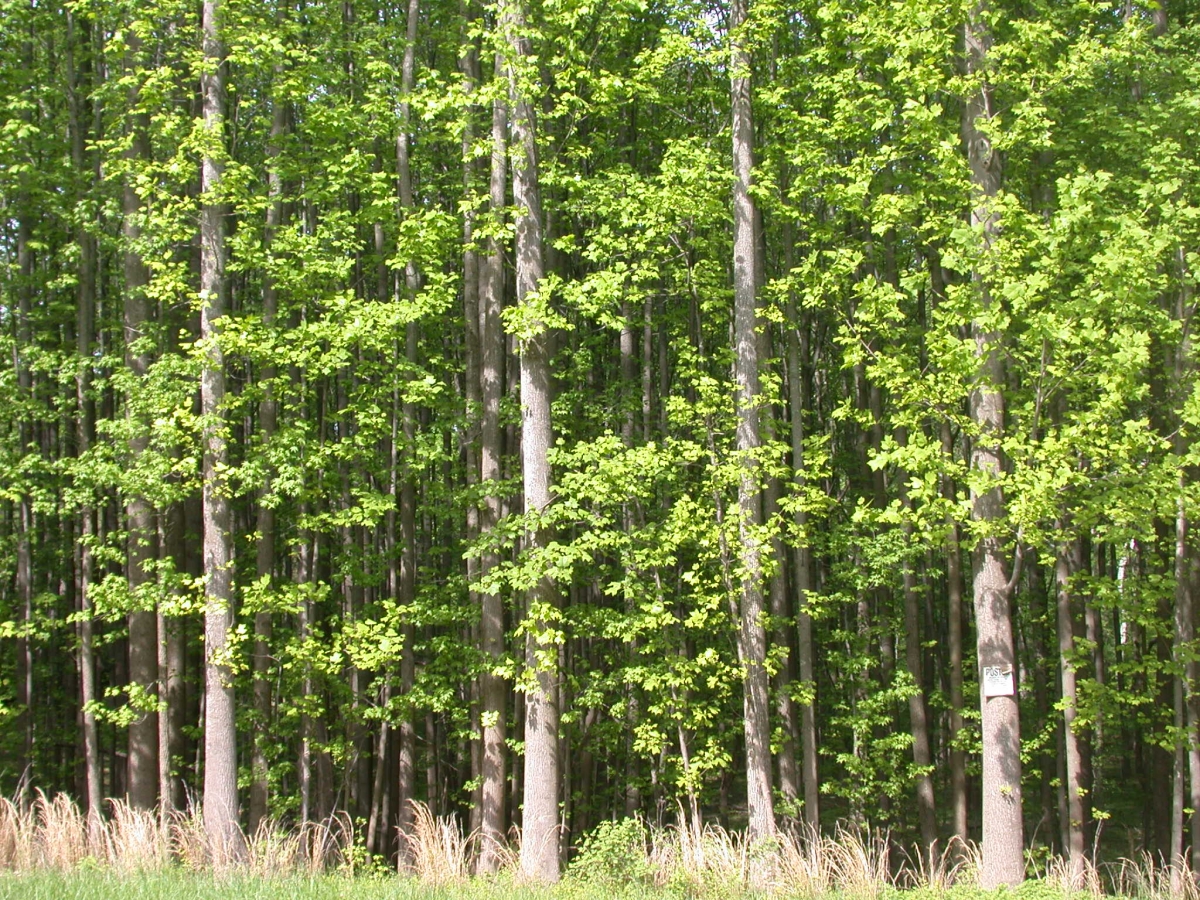How to Make and Use Manual Band Dendrometers

A tulip poplar (Liriodendron tulipifera) forest at SERC (Credit: Jess Parker/SERC)
Select trees to measure
Select trees that are alive and healthy. Do not select plants such as palms, bamboos, or cacti. Because they grow differently, the dendrometer method is not suitable for them. For ease and accuracy of measurement, the selected tree should be relatively straight, have a single trunk, be free of vines or other growth, and if possible be easily accessible. Ideally, the trunk diameter should be at least 20 cm.
Consider choosing trees of various species and sizes, and in different surroundings. If possible, avoid locations where passing people might disturb or dislodge the dendrometer band. In making your selection, consider how you plan to use the data you will gather and what sort of comparisons you might want to make.
Once you have selected a tree, measure and record the circumference of the tree at 1.3 meters from the ground. If the tree is on a slope, measure on the uphill side. If there is something that obstructs measurement at the standard height, such as thorns, a branch, a wound or an irregularity in the trunk, measure at the nearest unobstructed height and record the height of your measurement.
This height, 1.3 meters, is the standard height at which trees are measured. The diameter measurement made at this height is called Diameter at Breast Height (DBH). This is a preliminary measurement on which you will base the length of material for the band. (For this initial measurement, however, make sure you are recording the circumference of the tree, not the diameter.)
Assign a unique ID to the tree for record keeping and mark the tree with this ID. One way to mark the tree is to nail a uniquely numbered tag to the tree near the height where the band will go. Drive the nail in only until it is firmly seated in the wood – maybe 1-2 cm. The nail will not harm the tree. Or, if the stem is too small for a nail, you can use a loop of wire to hold the tag. The loop should be very loose to allow for growth.
In addition to the species and DBH, you may also find it useful to make notes about the characteristics of the tree and its location. Is there anything unusual or noteworthy about the tree – for example, damage, irregularities, buttresses, signs of disease? How much light does it get? Is it a tall tree whose crown gets a lot of direct sunlight or is it an understory tree? Are there other trees close by, or does it have plenty of space? How does its size or apparent age compare with nearby trees? Is it on relatively level ground or on a slope? If on a slope, how steep and facing in which direction? What is the soil around the tree like? Is it wet or dry? Loose or compacted? Is the tree near a road or heavily used path? Photographs of the tree and its setting could be valuable, as could GPS coordinates, if available.
